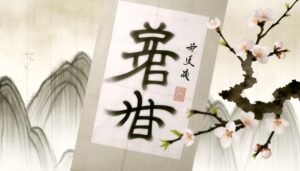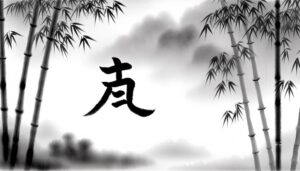What Is the Chinese Symbol for Respect?
The Chinese character for respect is 敬 (jìng). Historically rooted in Confucian ethics, this symbol represents a pivotal societal value integral to maintaining harmony and hierarchical structures.
Its etymological components reflect respect through proper behavior and solemnity, evolving from Bronze inscriptions to modern standard script. Culturally, 敬 underscores familial piety, professional etiquette, and ceremonial propriety, marking it vital in both personal and public spheres.
In professional contexts, it's reflected in rituals such as bowing and business card exchanges. Additionally, 敬 continues to blend traditional values with contemporary practices, ensuring its significance in modern Chinese society.
To comprehend its deeper implications, explore further.
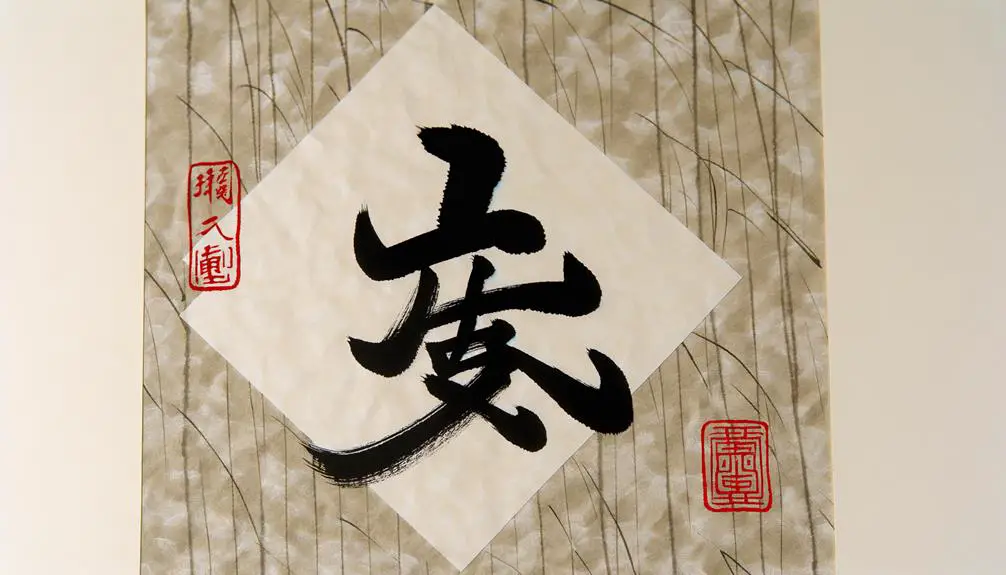
Key Takeaways
- The Chinese character for respect is 敬 (jìng).
- 敬 (jìng) is integral to Confucian ideals of filial piety and hierarchical respect.
- Historically, 敬 (jìng) evolved from ancient Bronze inscriptions and Seal script.
- Proper use of 敬 (jìng) is essential in professional and ceremonial contexts.
- In family dynamics, 敬 (jìng) emphasizes the respect and care for elders.
Historical Origins
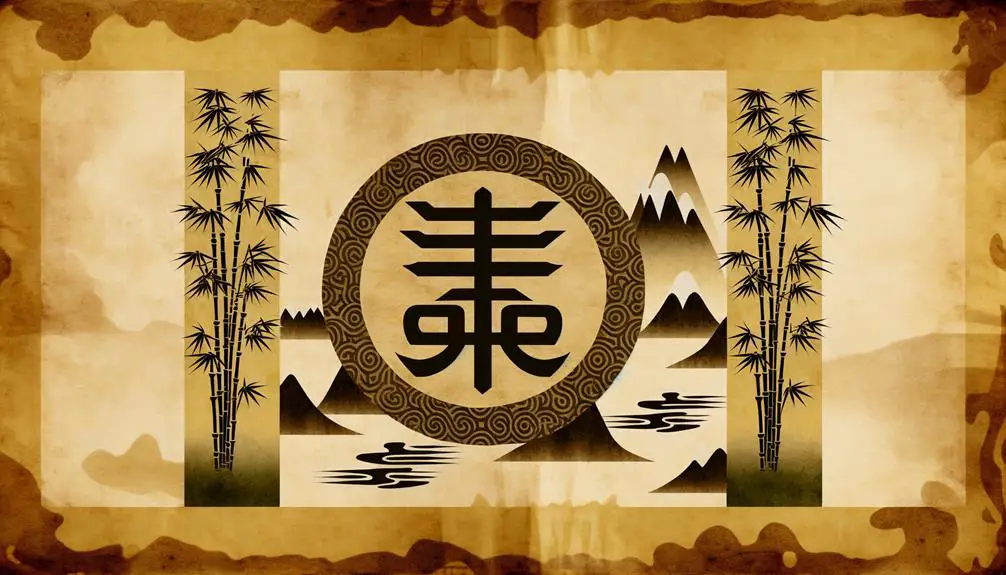
The historical origins of the Chinese symbol for respect, 敬 (jìng), can be traced back to ancient Chinese civilization, where it emerged as an important element in the Confucian ethical framework. Within this cultural and philosophical context, the notion of respect was not merely a social courtesy but a foundational principle guiding interpersonal relationships, governance, and moral conduct.
Confucius emphasized respect as a pivotal virtue necessary for societal harmony, encapsulated in the concept of 'filial piety' (孝, xiào). The symbol 敬 was hence integral in maintaining hierarchical structures within families and communities.
Over centuries, respect became institutionalized through rituals, education, and legal systems, reflecting its enduring significance in Chinese culture and its pervasive role in shaping social norms.
Etymology
Understanding the etymology of the Chinese symbol for respect, 敬 (jìng), requires an examination of its linguistic roots and the evolution of its written form through various historical periods.
The character 敬 is composed of two radicals: 攵 (pu), symbolizing action or conduct, and 苟 (gǒu), historically representing reverence or seriousness. This composition reflects the act of showing respect through proper behavior and solemnity.
Key historical developments include:
- Bronze inscriptions (circa 11th century BCE): Early forms depicted reverence and ritualistic actions.
- Seal script (Qin dynasty): Evolved to more abstract representations, emphasizing structure.
- Modern standard script (Han dynasty onwards): Simplified yet retaining the essence of conduct and reverence.
These elements collectively underscore the depth of the character's etymological journey.
Cultural Significance
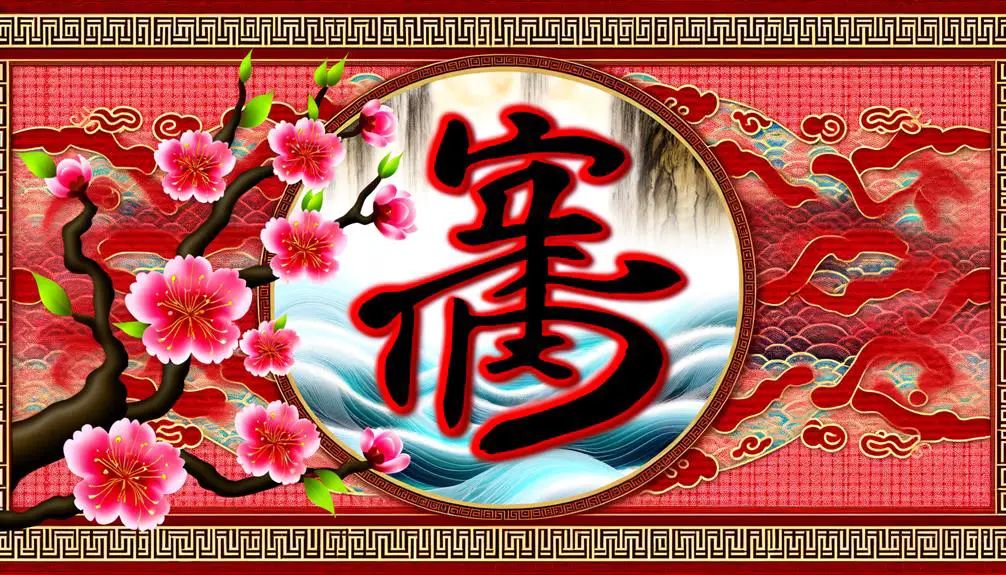
Examining the cultural significance of the Chinese symbol for respect, 敬 (jìng), reveals its profound influence on various aspects of Chinese society, including social hierarchy, familial relationships, and traditional rituals.
This character encapsulates a deep-rooted reverence, essential in maintaining societal order and harmony. It manifests in social customs, where elders and authorities are accorded deference, reflecting Confucian ideals of filial piety and hierarchical respect.
Ritualistically, 敬 is integral in ceremonies honoring ancestors and deities, underscoring a collective acknowledgment of lineage and spiritual entities. This pervasive respect fosters a culturally ingrained sense of duty and propriety, ensuring that actions and interactions align with societal norms and moral expectations.
Consequently, 敬 serves as a cornerstone of Chinese cultural identity.
Family Dynamics
In the domain of family dynamics, the character 敬 (jìng) plays a pivotal role in shaping the interactions and hierarchies within Chinese households, reflecting and reinforcing Confucian values of respect and filial piety. This concept underscores the importance of maintaining harmony and proper conduct among family members.
Hierarchical Relationships:
Elders are accorded high respect, with younger members showing deference.
Filial Piety:
Children are expected to honor and care for their parents.
Intergenerational Support:
Mutual support between generations reinforces family unity and social stability.
The character 敬 (jìng) consequently serves as a fundamental principle, guiding behavior and expectations within the familial structure, ensuring that respect is both given and received appropriately.
Professional Etiquette
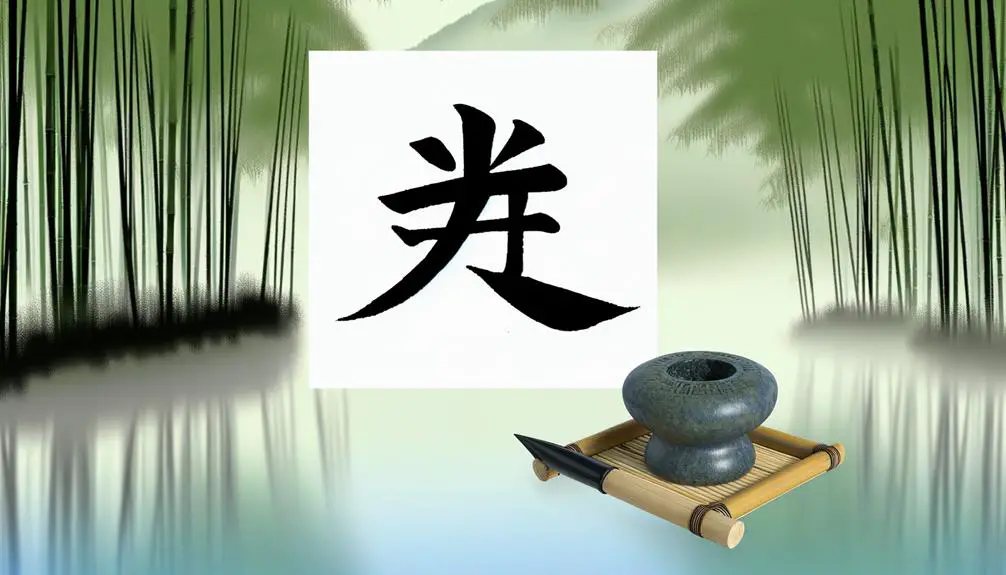
Professional etiquette in Chinese culture places significant emphasis on proper greetings and the ritualistic exchange of business cards, both of which are deeply rooted in the broader concept of respect. Proper greetings, often involving a slight bow or a handshake, are critical in establishing initial rapport and demonstrating mutual respect.
Similarly, the exchange of business cards is conducted with both hands and a slight bow, symbolizing the importance of the relationship and the seriousness with which the interaction is regarded.
Proper Greetings
Proper greetings in Chinese professional settings encompass a range of culturally nuanced practices that reflect the underlying values of respect and hierarchy ingrained in Chinese society. These greetings are pivotal in establishing rapport and conveying mutual respect.
Key elements include:
- Bowing or slight head nod: While not as pronounced as in Japanese culture, a slight bow or nod can signify respect.
- Addressing by title and surname: Using professional titles and surnames rather than first names underscores the hierarchical nature of Chinese business etiquette.
- Firm, but not overpowering, handshake: A handshake is customary, but it should be gentle and accompanied by maintaining eye contact to demonstrate sincerity.
Understanding these practices is essential for fostering positive professional relationships within Chinese cultural contexts.
Business Card Exchange
The exchange of business cards in Chinese professional settings is a highly ritualized process that serves as a critical first step in establishing formal business relationships. This practice embodies respect, careful attention to hierarchical norms, and a commitment to mutual recognition.
Cards should be presented and received using both hands, with a slight bow, signifying deference and politeness. It is imperative to study the card momentarily, acknowledging its content, before placing it in an appropriate holder. This act demonstrates attentiveness and respect for the counterpart's identity and status.
Neglecting these conventions can be perceived as disrespectful, potentially undermining the nascent relationship. Mastering this nuanced interaction is essential for fostering successful business engagements in China.
Educational Contexts
In educational contexts, the Chinese character for respect (敬, jìng) serves as a foundational principle that is deeply embedded in both traditional and contemporary pedagogical practices. This principle manifests in various ways that underscore the value placed on mutual respect between teachers and students, as well as among peers.
- Teacher-Student Relationships: Teachers are revered as holders of knowledge, and students are expected to show deference.
- Curriculum Design: Educational materials often emphasize moral and ethical teachings, integrating respect as a core value.
- Classroom Etiquette: Formal greetings, attentive listening, and disciplined behavior are standard, reflecting the cultural importance of respect.
Thus, the character 敬 (jìng) is not merely a symbol but a dynamic element shaping educational environments.
Religious Connotations

Within religious connotations, the Chinese character for respect (敬, jìng) embodies profound reverence towards deities, ancestors, and sacred practices, reflecting the deep spiritual roots interwoven into Chinese culture.
This character is pivotal in rituals such as ancestral worship and offerings, where filial piety (孝, xiào) and respect merge to honor lineage and divine entities. The act of bowing or presenting offerings is imbued with jìng, symbolizing a bridge between the mortal and the divine.
Additionally, in Taoism and Buddhism, jìng emphasizes humility and veneration towards spiritual teachings and the natural order. This reverence not only sustains religious observances but also perpetuates a collective ethos of spiritual mindfulness and respect throughout the community.
Social Interactions
In exploring the symbol of respect within Chinese social interactions, one must consider the intricate practices of greetings and gestures, the nuanced conventions of gift-giving etiquette, and the deeply rooted hierarchical relationships.
These elements collectively reveal the cultural fabric that underpins respectful behavior in Chinese society. Analyzing these points provides critical insight into how respect is both expressed and perceived in various social contexts.
Greetings and Gestures
Understanding the nuances of greetings and gestures in Chinese social interactions is vital for effectively conveying respect and maintaining harmonious relationships. In Chinese culture, the subtleties of non-verbal communication play a vital role in social etiquette.
For instance, the traditional Chinese greeting involves a slight bow accompanied by a gentle handshake, signifying mutual respect and humility.
- Bowing: A slight nod or bow demonstrates respect, particularly towards elders or superiors.
- Handshakes: A light, brief handshake is common; a firm grip is often deemed aggressive.
- Facial Expressions: Maintaining a calm and polite demeanor is essential, as overly expressive gestures may be interpreted as disrespectful.
These practices underscore the importance of understanding cultural context to foster respectful and harmonious interactions in Chinese society.
Gift-Giving Etiquette
Understanding the complexities of Chinese social interactions also requires a deep understanding of gift-giving etiquette, a practice imbued with cultural significance and symbolic meaning. In Chinese culture, the act of giving and receiving gifts is not merely transactional but is a profound gesture of respect and relationship-building. The choice of gift, its presentation, and the manner in which it is given are all pivotal.
It is customary to present gifts with both hands, symbolizing wholehearted respect. Additionally, certain items, such as clocks or sharp objects, are avoided due to their negative connotations. The act of politely declining a gift once or twice before accepting it demonstrates humility and respect for the giver, reflecting the intricate social dance that defines Chinese interactions.
Hierarchical Relationships
At the core of Chinese social interactions lies a profound respect for hierarchical relationships, which are meticulously observed and maintained in various aspects of life. This hierarchy is deeply embedded in cultural norms, influencing behavior and communication within familial, professional, and societal contexts.
Familial Respect: Elders are revered, and younger members are expected to show deference, often expressed through language and actions.
Workplace Dynamics: Seniority dictates interactions, with subordinates displaying utmost respect and adherence to their superiors' directives.
Social Etiquette: Honorific titles and formal gestures are employed to signify respect, especially in formal gatherings.
This structured approach to social hierarchy underscores a collective ethos, ensuring harmony and order within the community.
Modern Usage
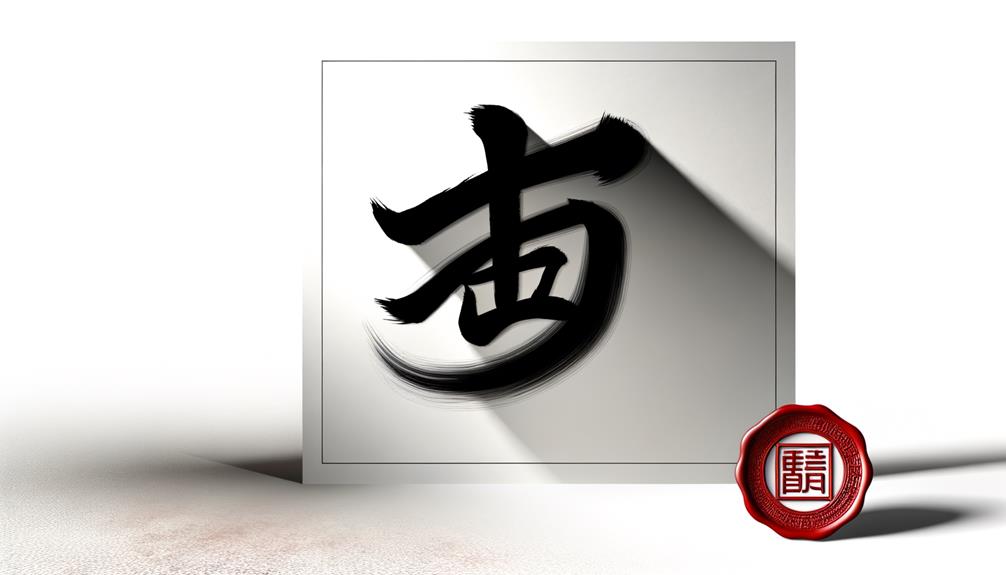
In contemporary Chinese society, the symbol for respect (敬, jìng) finds extensive application across various domains, reflecting both cultural heritage and modern values.
In interpersonal communication, 敬 is often used in formal letters and greetings, signifying deference and politeness.
In corporate settings, it underscores professional etiquette, fostering harmonious relationships and mutual respect among colleagues.
Additionally, 敬 features prominently in ceremonial contexts, such as during traditional festivals and rituals, symbolizing reverence for ancestors and cultural traditions.
The character is also prevalent in educational settings, where it encourages respect for teachers and the pursuit of knowledge.
Hence, the modern usage of 敬 encapsulates a blend of time-honored customs and contemporary practices, underpinning the societal emphasis on respect and civility.
Comparative Analysis
While the modern usage of the symbol for respect (敬, jìng) highlights its integration into various aspects of contemporary Chinese life, a comparative analysis with other cultures reveals both unique applications and universal themes surrounding the concept of respect.
For instance, in Japanese culture, the symbol 敬 (keii) shares similar etymological roots, emphasizing deference and honor.
In Western cultures, respect often manifests through verbal affirmations and social etiquette.
Indigenous cultures frequently embed respect in rituals and oral traditions.
This comparative perspective underscores both the shared and distinctive facets of respect across cultures.
Conclusion
The Chinese symbol for respect, deeply rooted in historical origins and etymology, serves as a cultural cornerstone in familial, professional, and religious contexts.
In social interactions, it functions as a vessel of mutual recognition and honor. Modern usage continues to uphold these traditions, reflecting an enduring legacy.
Like an ancient tree whose branches touch every aspect of life, the symbol of respect in Chinese culture intertwines with the past, present, and future, fostering a cohesive societal fabric.

